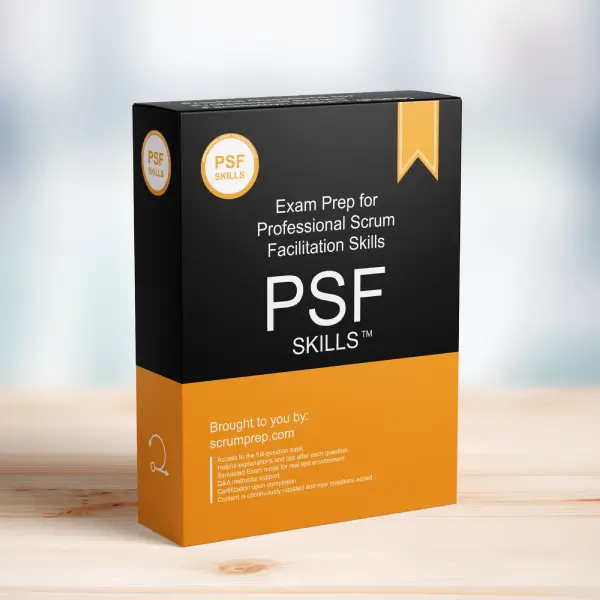Effective Facilitation in Scrum Sessions
Facilitation plays a crucial role in ensuring productive and engaging sessions. Understanding whether facilitation exercises are necessary for effective facilitation helps improve the overall efficiency of Scrum events.
Exam Question
A well-facilitated session means that we have experienced different interactive facilitation exercises during that session.
(choose the best answer)
A. False. Facilitation exercises may be involved, but not necessary.
B. True. Facilitation exercises are the best way to allow a facilitator to remain neutral in a conversation.
C. True. Facilitated exercises are the only way to make sure we hear from introverted individuals.
D. True. Facilitated exercises keep everyone engaged in sessions.
Correct Answer
A. False. Facilitation exercises may be involved, but not necessary.
Explanation
Correct Answer
A. False. Facilitation exercises may be involved, but not necessary:
A well-facilitated session does not necessarily require different interactive facilitation exercises. While these exercises can enhance engagement and participation, effective facilitation focuses more on achieving the session’s objectives and ensuring that all voices are heard. The facilitator’s ability to guide discussions, manage conflicts, and ensure that the group remains focused on the goal is more critical than the specific exercises used.
Why the Other Options Are Less Relevant
B. True. Facilitation exercises are the best way to allow a facilitator to remain neutral in a conversation:
Facilitation exercises can help maintain neutrality, but they are not the only method. Facilitators can use various techniques to remain neutral, such as active listening, summarizing points, and encouraging equal participation without relying solely on exercises.
C. True. Facilitated exercises are the only way to make sure we hear from introverted individuals:
While facilitated exercises can help introverted individuals participate, there are other ways to ensure their voices are heard, such as one-on-one check-ins, anonymous feedback tools, and creating a safe environment for all participants.
D. True. Facilitated exercises keep everyone engaged in sessions:
Facilitated exercises can help maintain engagement, but engagement can also be achieved through clear objectives, relevant content, and a facilitator’s ability to manage energy levels and interactions within the group.
Benefits of Effective Facilitation
- Achieving Objectives: Ensuring the session meets its goals and outcomes.
- Inclusive Participation: Encouraging input from all participants, regardless of their communication style.
- Maintaining Focus: Keeping the group focused on the topic and avoiding distractions or derailments.
- Managing Conflict: Handling disagreements constructively to ensure productive discussions.
Key Takeaways
- Effective facilitation is more about achieving session objectives and managing group dynamics than the specific exercises used.
- Various techniques, not just facilitated exercises, can help maintain neutrality, encourage participation, and keep participants engaged.
Conclusion
Facilitation is a skill that goes beyond simply using exercises. While these can be beneficial, the true measure of effective facilitation lies in achieving the desired outcomes of the session. For more information on preparing for the PSF Skills exam, visit our Professional Scrum Facilitation Skills PSF Skills™ Exam Prep.



